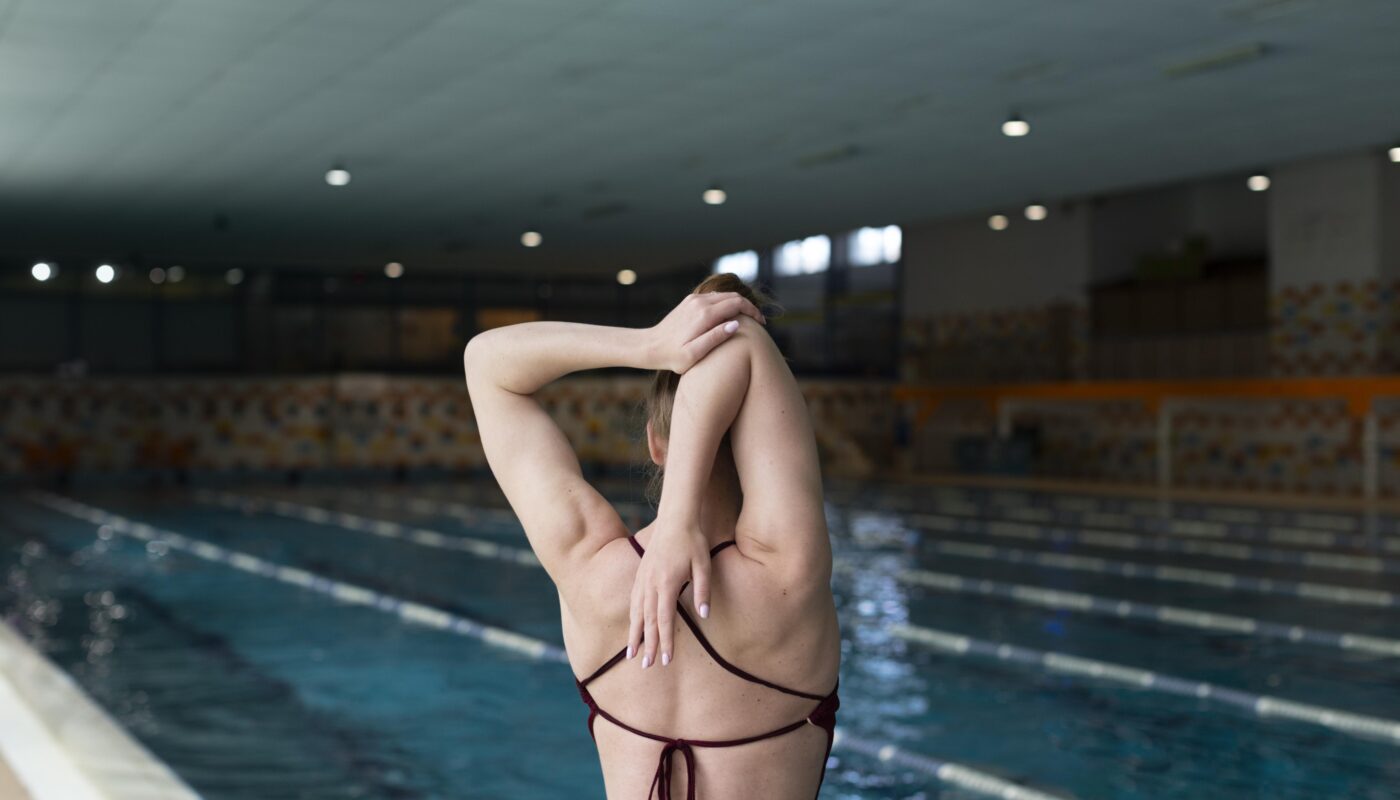Swimming is a demanding sport that engages nearly every muscle in the body, making it a full-body workout with numerous health benefits. However, for professional swimmers, one common and frustrating issue they face is muscle cramping. Cramping can halt training sessions, disrupt competitions, and cause lingering soreness. For competitive swimmers who spend hours in the pool every day, preventing and managing cramps is essential for consistent performance and safety. This article explores the causes of muscle cramps in swimmers and effective ways to prevent and manage them, ensuring athletes can maintain peak physical performance.
Understanding Muscle Cramps in Swimmers
Muscle cramps are sudden, involuntary contractions of one or more muscles, typically resulting in pain and tightness. For swimmers, cramps usually occur in the legs, calves, or feet but can also affect other muscle groups engaged during swimming.
Common Symptoms of Muscle Cramps
- Muscle stiffness or sudden severe pain
- Muscle hardening or bulging
- Restricted range of motion
- Lingering tenderness after the cramp subsides
Knowing the specific triggers and strategies to prevent muscle cramps can allow swimmers to enhance performance and maintain consistent training schedules.
Causes of Muscle Cramps in Professional Swimmers
Several factors can contribute to muscle cramps, particularly for swimmers who constantly engage various muscle groups and endure prolonged exertion in cold water. Here are the primary causes:
1. Electrolyte Imbalance
Electrolytes such as potassium, sodium, calcium, and magnesium are crucial for proper muscle function. When these levels drop, muscle fibers may become more susceptible to involuntary contractions. Swimming in saltwater can also affect sodium levels, as salt can draw water and electrolytes away from the muscles.
2. Dehydration
Although swimmers are immersed in water, dehydration is still a common problem. As muscles lose fluids through sweat, the risk of cramping increases. Swimmers may not always feel the need to hydrate since they’re surrounded by water, making dehydration a stealthy but common cause of cramping.
3. Cold Water Temperatures
Cold water can restrict blood flow, making muscles stiffer and more prone to cramps. For professional swimmers, especially those training in open water or unheated pools, cold temperatures can be a significant factor.
4. Intensive Muscle Use and Fatigue
Swimming at a high intensity and for prolonged periods places stress on the muscles. The repetitive, powerful movements required for strokes such as the butterfly and freestyle can fatigue muscle fibers, making them more likely to cramp.
5. Poor Conditioning or Overuse
For athletes who increase their training volume too quickly or neglect specific muscle groups, overuse and poor conditioning can lead to cramping. Swimmers who skip targeted strength exercises may find their muscles are less resilient during intense training.
Effective Prevention Strategies for Cramping in Swimmers
In order to effectively manage muscle cramps, prevention is crucial. Swimmers can benefit from a combination of hydration, nutrition, conditioning, and proper warm-ups. Here are practical strategies to prevent muscle cramps:
1. Prioritize Hydration
Staying hydrated is essential for muscle function. Swimmers should develop a hydration strategy before, during, and after training sessions. Some tips include:
- Pre-hydrate: Drink 16–20 ounces of water or a sports drink 2–3 hours before swimming.
- During Exercise: Take in small amounts of fluid every 15–20 minutes, depending on the workout’s intensity and duration.
- Rehydrate After: Drinking an electrolyte-rich beverage after practice helps replenish fluids and maintain electrolyte balance.
2. Maintain Balanced Electrolyte Levels
Since an electrolyte imbalance can trigger cramps, it’s beneficial for swimmers to incorporate electrolyte-rich foods and beverages. Key tips include:
- Consume Potassium: Bananas, avocados, and oranges are rich sources.
- Get Enough Calcium: Dairy, leafy greens, and fortified plant-based milk can help.
- Include Sodium in the Diet: Adding a pinch of salt to meals or consuming broth-based soups can prevent sodium depletion.
- Use Sports Drinks: During longer training sessions, an electrolyte-enhanced drink can help keep sodium and other minerals balanced.
3. Incorporate Stretching and Mobility Exercises
Regular stretching can reduce the frequency and intensity of cramps. Focused stretches for the calves, hamstrings, quadriceps, and feet are especially useful for swimmers. Here are some effective stretching routines:
- Dynamic Warm-up: Engage in active stretches before training, such as leg swings and arm circles, to warm up the muscles and increase blood flow.
- Static Stretching Post-Training: After practice, hold stretches for each major muscle group for 20–30 seconds to enhance flexibility and relieve tightness.
- Ankle and Foot Stretches: Since foot cramps are common, use a resistance band to flex and extend the foot, improving flexibility and range of motion.
4. Practice Gradual Conditioning
Conditioning allows the muscles to adapt to increasing intensity. Swimmers can benefit from cross-training to build strength and flexibility:
- Gradually Increase Workout Intensity: Avoid sudden jumps in training duration or difficulty to reduce the risk of cramping.
- Focus on Core Strength: A strong core provides stability and reduces muscle strain.
- Add Land-Based Strength Training: Exercises such as squats, lunges, and calf raises strengthen muscles used in swimming, building endurance and resilience.
5. Ensure Proper Nutrition
Diet plays a major role in cramp prevention, as it provides the fuel needed for muscle endurance:
- Carbohydrate Intake: Carbohydrates provide energy for extended workouts, so consuming complex carbs like oats, whole grains, and fruits is beneficial.
- Protein: Lean protein sources help muscle recovery.
- Healthy Fats: Omega-3-rich foods, like salmon and walnuts, can reduce inflammation.
Managing Muscle Cramps During a Swim
Even with preventive measures, cramps may still occasionally occur during a swim. In these cases, knowing how to manage a cramp quickly and effectively is essential to avoid disrupting training or competition:
1. Stop and Stretch
If a cramp occurs, it’s crucial to stop swimming, float on your back, and stretch the affected muscle. For example:
- Calf Cramp: Flex the foot upwards, bringing the toes toward the shin to relieve tension.
- Foot Cramp: Rotate and stretch the toes to release tightness.
- Hamstring Cramp: Extend the leg and hold the stretch gently to reduce pain.
2. Gently Massage the Muscle
Using a gentle massage can promote blood flow to the cramping muscle and help it relax. For calf cramps, gently press and knead the area to alleviate the discomfort.
3. Deep Breathing
Cramping can create a feeling of panic, especially in open water or deep pools. Practicing deep breathing techniques helps manage discomfort, allowing swimmers to stay calm until the cramp subsides.
4. Return to the Pool Slowly
Once the cramp has passed, go back to the pool more slowly. Gradually increase your stroke speed to avoid re-triggering the cramp. Take it easy for a few minutes before resuming full training intensity.
Long-Term Management and Recovery Strategies
Muscle recovery is crucial for athletes, and proper post-training care can reduce the risk of recurring cramps. Here are additional strategies for long-term cramp management:
1. Include Regular Massage Therapy
Professional massages help release muscle tightness and improve circulation, which can reduce the likelihood of cramps. Massage also aids in muscle recovery after intense training sessions.
2. Practice Yoga for Flexibility
Yoga enhances flexibility, improves muscle balance, and builds core strength. Specific poses, like downward dog and pigeon, target areas prone to cramping in swimmers, such as the legs and feet.
3. Consider Magnesium Supplements
Magnesium is a key mineral for muscle function. Discuss with a healthcare provider whether a magnesium supplement is appropriate, especially if cramping persists despite other preventive measures.
4. Monitor and Adjust Workouts
Track workouts, noting the duration and intensity and any cramping incidents. Monitoring can help identify patterns or specific workouts that may contribute to cramping, allowing for targeted adjustments.
5. Prioritize Rest and Recovery
Overtraining is a common cause of cramps. Ensure ample recovery time between intense sessions to prevent muscle fatigue and strain. Sufficient rest is essential for muscle repair and helps prevent chronic cramps.
Conclusion
For professional swimmers, managing and preventing cramps is critical to ensure consistent performance and maintain muscle health. By understanding the causes of cramps, taking preventive measures, and employing effective strategies to manage them during training or competition, swimmers can minimize disruptions. With a well-rounded approach to hydration, nutrition, stretching, and conditioning, swimmers can keep cramps at bay, allowing them to perform at their best while avoiding unnecessary discomfort.



